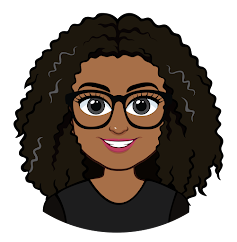6/16-6/18 LDOE Environmental Education-Launching Meaningful Anchoring Phenomena
Quality of Professional Development: Excellent
Technology: Cell phones ( we took pictures and upload them using zoom chat), Zoom
Length: 2 days
I have to apologize for not posting this sooner. I started this article, stopped went to training, and recently returned yesterday. I had the privilege of attending another awesome professional development offered by the LDOE last week. This time it was hosted by Environmental Education. It was very engaging and we had an excellent facilitator. Let me begin with this statement. We have a wide range of technology available, this does not obligate you to use it for every lesson. You can create an engaging lesson without implementing technology. One of my best observations I used a PowerPoint with multiple choice questions and had students simply raise their hands if they agreed with the answer. Why? We were having issues with the internet, so I decided to use Plan B. If you are a teacher that doesn't care for technology this professional development is for you.
I love how LDOE is providing professional development for lesson planning and implementing a high-quality science curriculum this summer. Again, they have brilliantly taken each phase of lesson planning and created individual sessions. This is making it easy for teachers to process new information, understand the instructional strategies used and why they were used. The was facilitator great! He guided us through the process using teacher and student hats. We observed phenomena, generated questions, and drew an initial model. I decided to create a hand drawing and a digital one. I decided to use google drawings for the digital one. I always have an alternative for my students (my initial model is below). We were given the option of taking a picture of our initial model with our cell phone and uploading it through chat. We discussed the models and then proceeded with elements 3 and 4.
One of my main concerns about using this student investigation process is writing daily objectives. How do we write objectives without revealing what the student is investigating and satisfy the administration? He provided an awesome resource for this: How to define meaningful objectives for scientific investigations. In addition, we were able to see one of his lesson plans. As I was reading the screen I notice the word "lecture"😁", this made my day. We still have to provide direct instruction sometimes. Personally, I don't have a problem with it. I feel that some science standards require direct instruction. You can always assign students an inquiry activity before or after the lecture.
This professional development provided more than enough information for launching meaningful phenomena in the classroom. I may have missed some information on this one because I was engaged in the activities. If I did please forgive me. Unfortunately on day two, I attended half of the session due to a prior engagement.
Here is a breakdown of my key takeaways from this 2-day professional development:
There are four steps to the anchoring phenomena routine:
Element 1: Explore-Attempt to make sense of the phenomena
Here we use notice and wondering chart to generate initial questions. These questions should be discussed (possible digital solutions-jamboard, dot storming, google slides, PowerPoint, padlet)
Element 2: Sense Making
How can we explain this?
Do our explanations agree?
This is my initial model I created from watching the phenomena, I created this in Google Drawings.
Alternate options: Canva for education, Adobe Spark, Be Funky, Crello, Vennage, and many others. 
Where does the similar happen?
Me (My relatable phenomena): University Lakes at LSU (when I was younger)
It's ok for teachers to add to the conversation
We shouldn't front load vocabulary. Students should be picking up vocabulary as we go
Students should have a section in the back of their science notebook for new vocabulary words. Personally, I would use frayer models.
Element 4: Develop Questions and Next Steps-
What should you do to figure out how to explain this?
How does it support equity and process? How does it support a culture where all students have access?
If you use a better phenomenon the expect that the process will be longer.
Make sure that formative assessments focuses on the performance expectation,
Jot down possible ideas for investigation
*Group questions into categories (I would use jamboard, dotstorming, padlet, and even google sheets)
Environmental Science Standard Used for Lesson
Next step, unpacking the standards
PE.-Design and evaluate a solution to limit the introduction of non point source pollution is state waterways
SEP: Constructing explanations and designing solutions
CCC: Structure and Function
DCI (content)-Pollution and the environment, environmental choices, defining and delimiting engineering problems
What are they supposed to do?
A solution to what? (DCI)
Annotate words that count when looking at the state standard (key words in this standard: design and evaluate)
The summative assessment shouldn’t be a surprise to anyone.
Use a generic rubric for grading that includes: a model with annotation, 5 or more vocabulary, conceptually correct.




I am loving reading your take aways and notes from Teacher Leader Summit sessions. Keep up the great work and making connections to how it applies to your specific content and students. Well done.
ReplyDeleteThank You!!!!
Delete